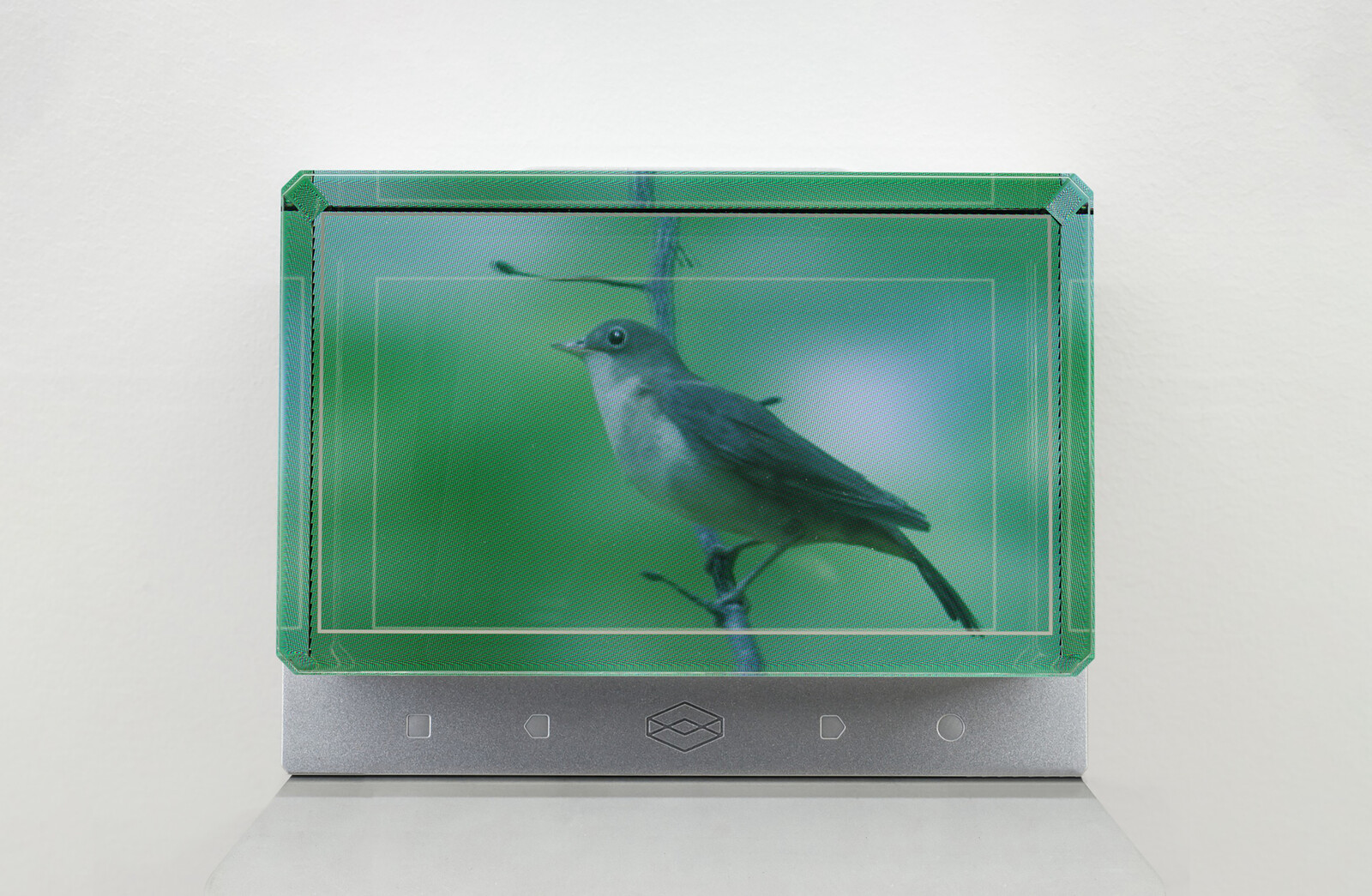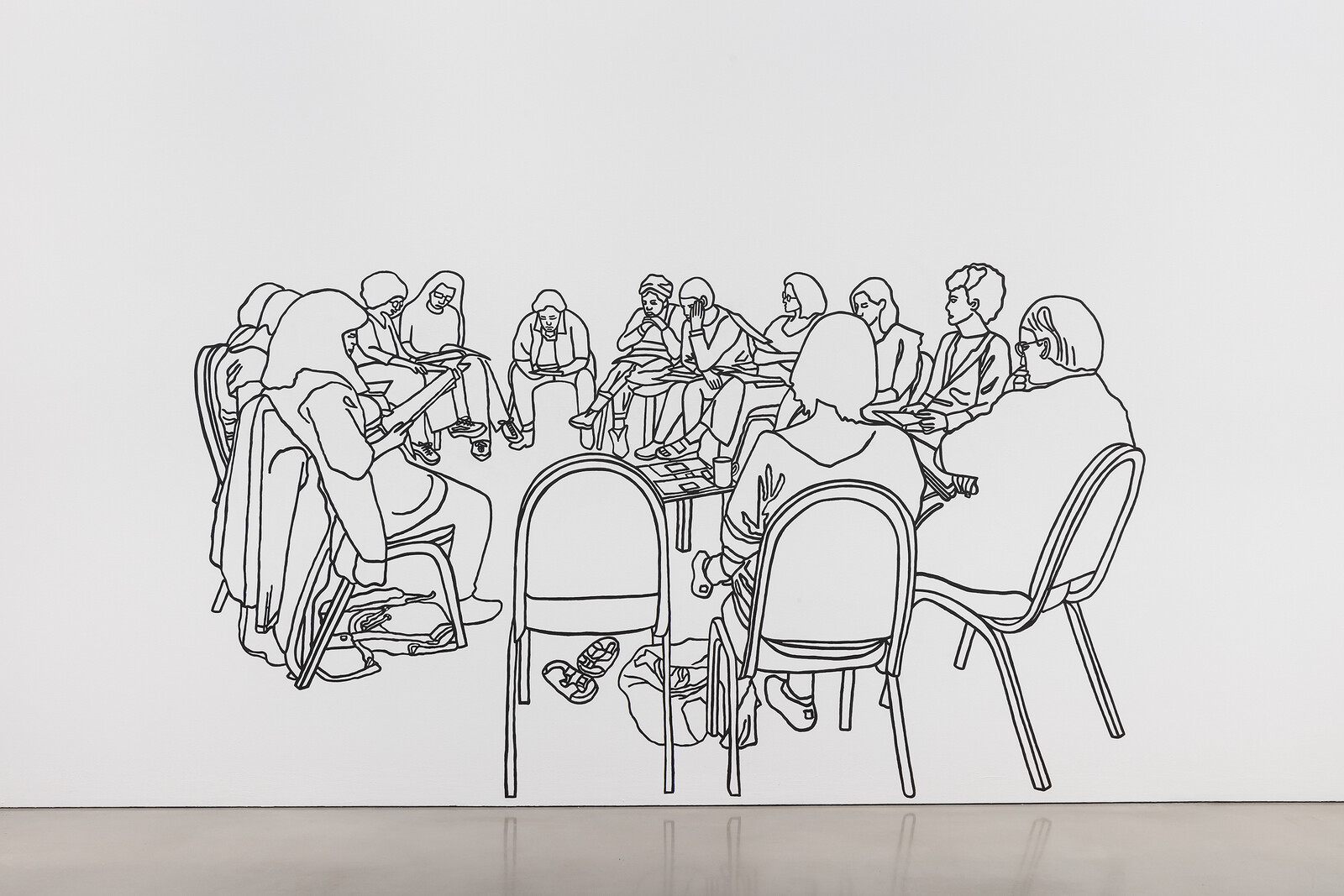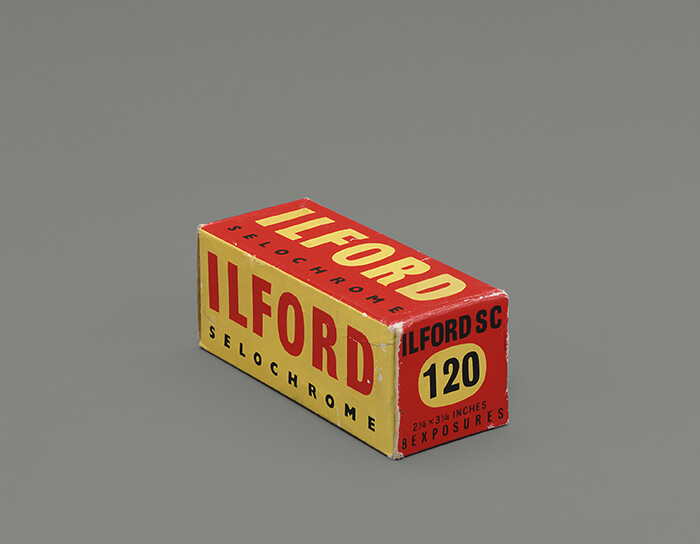Categories
Subjects
Authors
Artists
Venues
Locations
Calendar
Filter
Done
February 2, 2024 – Review
Deimantas Narkevičius’s “The Fifer”
Michael Kurtz

The centerpiece of Deimantas Narkevičius’s current exhibition at Maureen Paley is a holographic screen—a small block of glass on a sleek metal shelf. A nightingale appears in the glass and lands on a branch that hangs there, while audio plays of a flute mimicking birdsong in sync with the movements of its beak. It flies out of view again and then returns, left and right, left and right. On an adjacent wall is another branch of sorts—a bark-like bronze cast of the cavities inside a flute—and nearby hang two small black-and-white images: a 1920s photograph from the Lithuanian State Archive of a soldier playing the flute by a window and a digital recreation of the same scene from directly outside the building. This perplexing constellation of objects is named after the shadowy figure in the photograph, The Fifer (2019).
Holography represents the height of illusionism, elaborately conjuring animated three-dimensional images. But the nightingale’s restless movement in and out of frame continually calls attention to the screen’s edges, where the projection falters and the empty glass block becomes visible. The illusion is further ruptured by the flutist’s birdsong which, isolated from any ambient sound, is unconvincing. Each item here performs a …
November 4, 2022 – Review
Olivia Plender’s “Our Bodies are Not the Problem”
Tom Jeffreys

Olivia Plender’s research-driven practice is rooted in a fascination with the way communities self-organize—from activist groups, youth movements, and spiritualist associations to alternative education programmes and the offices of tech behemoths—and the strategies, labor, geographies, and architectures that enable (or obstruct) them. Her second solo exhibition at Maureen Paley recontextualizes texts, images, and actions relating to self-education and resistance, with the delicacy of several series of small drawings in black ink or charcoal pencil contrasting with all-caps wall posters proclaiming statements like “THEY WILL NOT DIVIDE US.” But in bringing together these slices from various projects, each of which has grown out of sustained historical research or community engagement, this exhibition is not always successful in communicating their richness or significance.
Plender takes great care in considering the spaces in which community organization takes place: she pays attention, for example, to the labor that goes into setting up for a meeting or tidying away afterwards. In 2021, she revamped the community room at Glasgow Women’s Library, transforming the upstairs area into one of welcoming softness. Plender’s life-size drawings are now emblazoned across a partitioning curtain. Floor rugs and jewel-toned bean-bags offer comfort for those wishing to sit or lie, while …
May 21, 2021 – Review
Peter Hujar’s “Backstage”
John Douglas Millar

“Backstage” is the third solo exhibition of Peter Hujar’s work to be presented at Maureen Paley’s London space since 2008, when the gallery took responsibility for the artist’s estate in the UK. The work is presented across two rooms; a larger space that almost exclusively shows portraits of artists from New York’s thriving drag performance scene of the 1970s, either preparing their costumes and make-up or gloriously composed backstage. These silver-gelatin prints were made by Hujar himself, with three exceptions: a portrait of the filmmaker John Waters, another of his muse Divine, and a group self-portrait showing Hujar jumping in the air with friends. These are all estate ink prints made by Gary Schneider, the artist and master printer trained by Hujar and now widely regarded as one of the finest printmakers alive. He is also the only printer authorized to make editions of Hujar’s work.
The second, smaller room displays four further estate prints: an extraordinary nude self-portrait entitled Seated Self-Portrait Depressed (1980); a portrait of Hujar’s friend the writer and raconteur Fran Lebowitz reclining in bed at her parents’ home in Morristown; one of Hujar’s sometime lover, protégé, and friend, the artist David Wojnarowicz, sparking up a cigarette on …
January 22, 2015 – Review
Morgan Fisher’s "Past Present, Present Past"
María Palacios Cruz

Since Susan Sontag announced the demise of cinephilia in her prescient 1996 essay “The Decay of Cinema,” discourses around the death of cinema have been widespread, fuelled in part by the replacement of celluloid by digital technology. Since our understanding of the world has been so influenced by movies—one irrevocably conditioning the other—cinema’s apparent passing has caused pain, and trauma.
By 2012 the digital takeover of film exhibition was complete. It had been threatened for almost a decade, but it was nevertheless shocking to see 35mm projectors evicted from projection booths across Western Europe and North America. Only a year earlier, British artist Tacita Dean had declared that UNESCO should recognize film as part of a universal cultural heritage, paying homage to it with her installation FILM (2011) at Tate Modern, London. The Austrian filmmaker Peter Kubelka labeled 2012 as film history’s darkest year, and produced Monument Film—a work which is impossible to stage digitally—“as a call for patient defiance.”
Whether working with film, painting, or photography, Los Angeles-based artist Morgan Fisher produces works that closely examine their medium. Best known for his 16mm films, which bring together industrial film practices and visual arts strategies, Fisher is a conceptual filmmaker who turns …